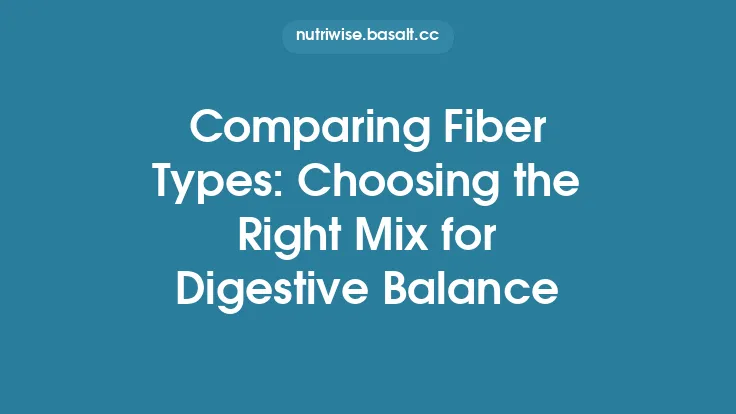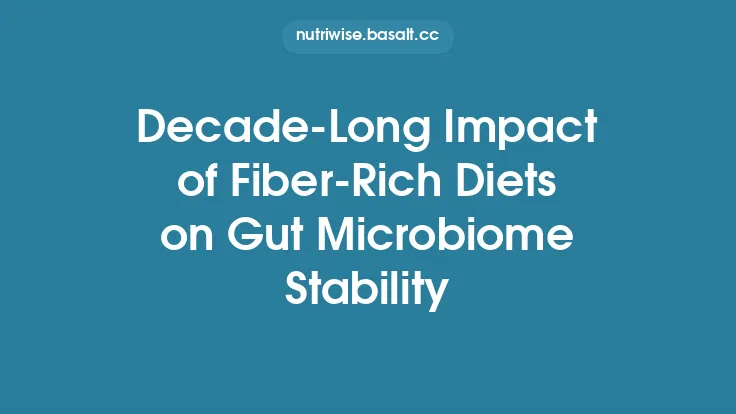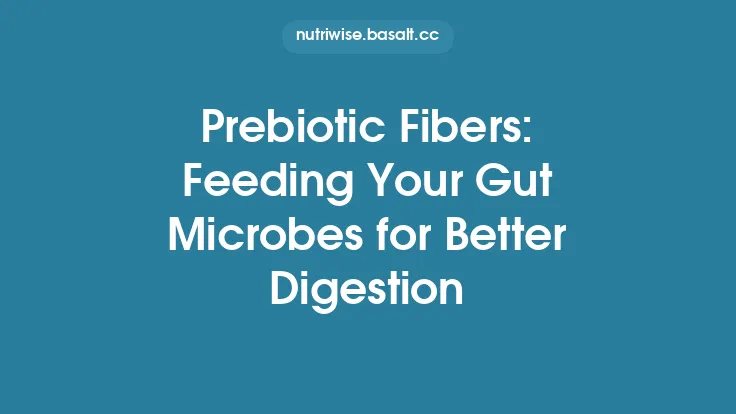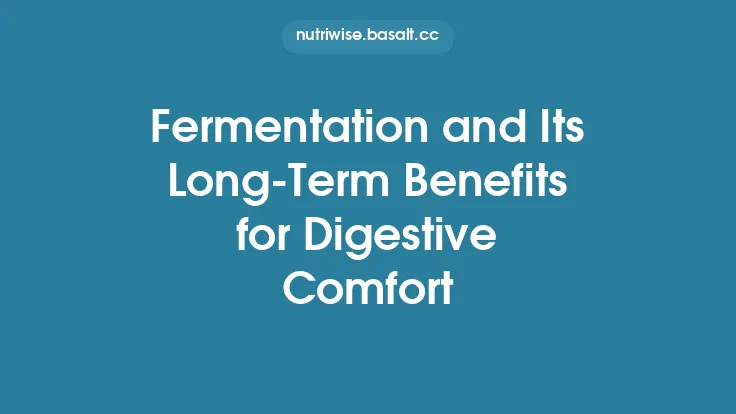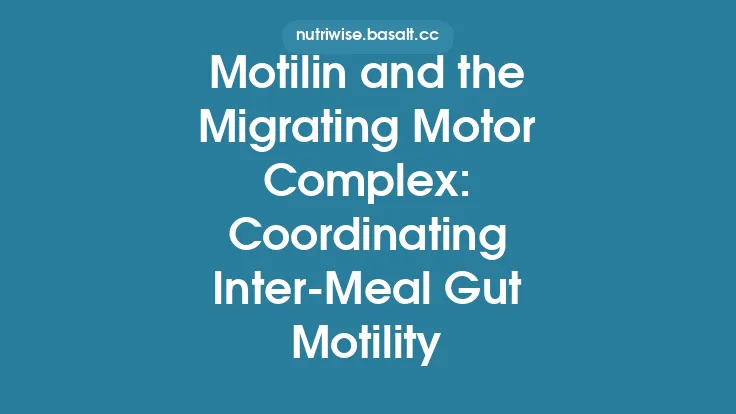Insoluble fiber is a crucial component of a balanced diet, playing a distinct role in the mechanical aspects of digestion. Unlike fibers that dissolve in water, insoluble fiber retains its structure as it moves through the gastrointestinal (GI) tract, providing a physical stimulus that supports the coordinated contractions of the intestines. This article delves into the nature of insoluble fiber, its unique properties, and the ways it contributes to efficient gut motility.
What Is Insoluble Fiber?
Insoluble fiber refers to the portion of dietary plant material that does not dissolve in water. It is composed mainly of cellulose, hemicellulose, lignin, and certain types of resistant polysaccharides. Because it resists breakdown by human digestive enzymes, it passes through the stomach and small intestine largely unchanged, reaching the colon where its physical presence continues to influence digestive processes.
Chemical Structure and Physical Properties
- Cellulose: A linear polymer of β‑(1→4)‑linked glucose units. Its extensive hydrogen‑bonding network creates a rigid, crystalline structure that is insoluble in water.
- Hemicellulose: A heterogeneous group of branched polysaccharides (e.g., xylans, mannans) that are less ordered than cellulose but still retain water‑repellent characteristics.
- Lignin: An aromatic polymer derived from phenylpropanoid units. Lignin is highly resistant to enzymatic degradation and contributes to the structural rigidity of plant cell walls.
- Water‑Holding Capacity: Although insoluble fibers do not dissolve, they can trap water within their matrix, increasing stool bulk and softening the fecal mass without forming a gel.
These structural features give insoluble fiber its hallmark ability to add bulk and create a gentle abrasive effect on the intestinal lining, which is central to its motility‑enhancing function.
Primary Food Sources
Insoluble fiber is abundant in the outer layers of plant foods. Common dietary sources include:
- Whole‑grain products (e.g., wheat bran, brown rice, barley)
- Nuts and seeds (e.g., almonds, sunflower seeds)
- Legume hulls (e.g., the skins of beans and peas)
- Vegetables with edible skins (e.g., carrots, cucumbers, bell peppers)
- Fruit skins and seeds (e.g., apple peel, grape skins)
Incorporating a variety of these foods ensures a steady intake of the different insoluble fiber components, each contributing subtly different physical effects within the GI tract.
How Insoluble Fiber Influences Gut Motility
The primary mechanism by which insoluble fiber supports gut motility is mechanical. As the fiber travels through the intestines, it:
- Adds Bulk: The fiber’s resistance to digestion increases the volume of luminal contents, stretching the intestinal walls.
- Stimulates Stretch Receptors: The distension of the gut wall activates mechanoreceptors that trigger peristaltic waves—coordinated, rhythmic contractions that propel contents forward.
- Facilitates Uniform Mixing: The presence of coarse particles promotes mixing of chyme with digestive secretions, ensuring that the muscular activity is evenly distributed along the tract.
These actions collectively enhance the speed and regularity of transit without relying on chemical signaling pathways that are more characteristic of soluble fibers.
Interaction with the Gastrointestinal Muscular System
Peristalsis is driven by the coordinated activity of circular and longitudinal smooth muscle layers. Insoluble fiber’s bulk effect leads to:
- Increased Intramural Pressure: The added mass raises intraluminal pressure, which the enteric nervous system interprets as a cue to initiate contraction of the circular muscle layer behind the bolus and relaxation of the longitudinal layer ahead of it.
- Enhanced Propulsive Force: The mechanical “push” generated by the fiber’s resistance to compression augments the force generated by muscle contractions, especially in the colon where the lumen is wider and transit time is longer.
Research using manometric studies has shown that meals high in insoluble fiber produce higher amplitude pressure waves in the colon compared with low‑fiber meals, underscoring the fiber’s role as a physical driver of motility.
Impact on Stool Bulk and Water Content
While insoluble fiber does not form a gel, its capacity to retain water within its matrix is essential for stool formation:
- Water Entrapment: The porous structure of cellulose and hemicellulose traps water, preventing excessive dehydration of the fecal mass.
- Softening Effect: By maintaining a hydrated bulk, the stool remains pliable, allowing the colon’s muscular contractions to move it efficiently without excessive strain.
This balance between bulk and moisture is a cornerstone of normal bowel function, ensuring that the colon can clear its contents without excessive effort.
Role in Maintaining the Integrity of the Colon Lining
The mechanical stimulation provided by insoluble fiber also contributes to the health of the colonic epithelium:
- Shear Stress: The gentle abrasive action of fiber particles creates low‑level shear stress on the mucosal surface, which has been shown to promote epithelial cell turnover and maintain tight junction integrity.
- Mucosal Protection: By increasing the thickness of the fecal layer, insoluble fiber provides a physical barrier that shields the epithelium from direct contact with potentially irritating substances in the lumen.
These effects are independent of microbial fermentation and reflect the direct, physical interaction between fiber and the gut wall.
Considerations for Dietary Intake
- Recommended Amounts: Dietary guidelines suggest that adults consume 25–38 g of total fiber per day, with at least half derived from insoluble sources. Exact needs vary with age, sex, and activity level.
- Gradual Introduction: Because insoluble fiber adds bulk, a sudden increase can cause temporary discomfort. Incremental additions allow the gut to adapt.
- Hydration: Adequate fluid intake is essential to maximize the water‑holding capacity of insoluble fiber and prevent excessive stool hardness.
Balancing insoluble fiber with other dietary components ensures a harmonious digestive environment.
Potential Pitfalls and How to Optimize Consumption
- Over‑Processing: Highly refined grains lose much of their insoluble fiber content. Choosing minimally processed whole foods preserves the fiber’s structural integrity.
- Cooking Methods: Excessive boiling can soften the fiber matrix, reducing its bulk‑adding properties. Steaming or baking retains more of the fiber’s physical characteristics.
- Individual Sensitivities: Some individuals may experience heightened bowel sensations with very high insoluble fiber intakes. Tailoring portions to personal tolerance is advisable.
By selecting appropriate food forms and monitoring intake, the benefits of insoluble fiber can be fully realized.
Summary of Key Points
- Insoluble fiber consists of cellulose, hemicellulose, lignin, and related polymers that resist dissolution and enzymatic breakdown.
- Its primary function in the GI tract is mechanical: adding bulk, stimulating stretch receptors, and enhancing peristaltic activity.
- The fiber’s water‑holding capacity contributes to stool softness while preserving bulk, facilitating smooth transit.
- Direct interaction with the colon’s muscular layers and mucosal surface supports both motility and epithelial health.
- Adequate intake, gradual incorporation, and proper hydration are essential for optimal outcomes.
Understanding the distinct, physically driven role of insoluble fiber equips individuals and nutrition professionals to design diets that naturally promote efficient gut motility, reinforcing overall digestive well‑being.

